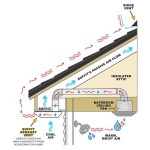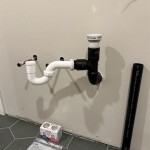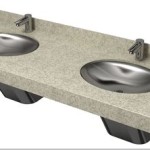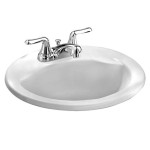Bathroom Sink Cabinet Top: A Comprehensive Guide
The bathroom sink cabinet top serves as a critical element in bathroom design and functionality. It is more than just a surface; it is a focal point that blends aesthetics with practicality. Selecting the appropriate material, style, and dimensions for a bathroom sink cabinet top is a significant undertaking, requiring careful consideration of various factors to ensure both durability and visual appeal. This article provides a comprehensive overview of bathroom sink cabinet tops, delving into material options, design considerations, installation aspects, and maintenance practices.
Material Choices for Bathroom Sink Cabinet Tops
The selection of materials for bathroom sink cabinet tops is extensive, each offering unique advantages and disadvantages in terms of cost, durability, aesthetics, and maintenance requirements. Common material choices include natural stone, engineered stone, solid surface, laminate, and wood. Understanding the properties of each material is crucial for making an informed decision that aligns with specific needs and preferences.
Natural Stone: Natural stone options, such as granite, marble, and quartz, offer a luxurious and timeless appeal. Granite is renowned for its durability and resistance to heat and scratches, making it a practical choice for high-use bathrooms. Marble, with its elegant veining and smooth surface, provides a sophisticated aesthetic but is more porous and susceptible to staining and etching. Quartzite, a naturally occurring metamorphic rock, offers the look of marble with better durability and stain resistance than marble. However, natural stone options tend to be more expensive and require professional installation.
Engineered Stone: Engineered stone, commonly known as quartz composite, is a manufactured material composed of quartz crystals and resin binders. This combination results in a non-porous surface that is highly resistant to staining, scratching, and bacterial growth. Engineered stone offers a consistent color and pattern throughout, unlike natural stone, which can exhibit variations. It is also generally more affordable than high-end natural stone options, making it a popular choice for homeowners seeking a durable and aesthetically pleasing surface.
Solid Surface: Solid surface materials, such as Corian and similar acrylic or polyester-based products, are non-porous and seamless. This makes them highly resistant to moisture, stains, and bacteria. Solid surface can be molded into various shapes and designs, offering flexibility in customization. Scratches and minor damage can often be easily repaired, extending the lifespan of the countertop. While solid surface is durable, it is less heat-resistant than natural stone and engineered stone.
Laminate: Laminate countertops consist of a thin layer of decorative laminate bonded to a particleboard or MDF core. Laminate is a cost-effective option available in a wide range of colors, patterns, and textures. While laminate is relatively durable and easy to clean, it is susceptible to scratching, chipping, and water damage, particularly around seams. High-pressure laminate options offer improved durability but come at a higher cost.
Wood: Wood countertops bring warmth and natural beauty to a bathroom. However, wood is porous and requires a durable sealant to protect it from moisture and water damage. Regular maintenance, including re-sealing, is essential to prevent warping, cracking, and bacterial growth. Wood countertops are best suited for powder rooms or bathrooms with low moisture levels. Different wood species, such as maple, walnut, and teak, offer varying levels of durability and aesthetic appeal.
Design and Installation Considerations
Beyond material selection, the design and installation of a bathroom sink cabinet top significantly impact its functionality and overall aesthetic. Factors to consider include countertop dimensions, sink type, edge profile, backsplash options, and installation expertise.
Countertop Dimensions: The width and depth of the countertop should be proportionate to the size of the bathroom and the dimensions of the cabinet below. Standard countertop depths typically range from 18 to 22 inches, while widths can vary depending on the number of sinks and the available space. It is crucial to ensure adequate clearance around the sink for comfortable use. Measure the bathroom space meticulously to determine the optimal countertop dimensions.
Sink Type: The choice of sink type—undermount, vessel, drop-in, or integrated—influences the countertop design and installation. Undermount sinks are installed beneath the countertop, creating a seamless and easy-to-clean surface. Vessel sinks sit on top of the countertop, adding a decorative element but requiring careful consideration of countertop height. Drop-in sinks, also known as self-rimming sinks, are installed into a pre-cut hole in the countertop, with the rim of the sink resting on the surface. Integrated sinks are made from the same material as the countertop, creating a seamless and hygienic surface.
Edge Profile: The edge profile of the countertop adds a finishing touch and can enhance the overall aesthetic. Common edge profiles include bullnose, eased, ogee, and beveled edges. Bullnose edges are rounded, providing a soft and comfortable feel. Eased edges are slightly rounded, offering a clean and simple look. Ogee edges feature a decorative curve, adding a touch of elegance. Beveled edges are angled, creating a modern and sophisticated appearance. The choice of edge profile should complement the overall bathroom design and the style of the sink.
Backsplash Options: A backsplash protects the wall behind the sink from water damage and adds a decorative element. Backsplashes can be made from the same material as the countertop or from complementary materials such as tile, glass, or stone. The height of the backsplash typically ranges from 4 to 8 inches. Consider the color, pattern, and texture of the backsplash to create a cohesive design.
Installation Expertise: Proper installation is crucial for ensuring the longevity and performance of the bathroom sink cabinet top. Natural stone and engineered stone countertops often require professional installation due to their weight and complexity. Laminate and solid surface countertops can be installed by experienced DIYers, but careful attention to detail is essential to prevent water damage and ensure a seamless fit. Incorrect installation can lead to problems such as leaks, cracks, and uneven surfaces.
Maintenance and Care of Bathroom Sink Cabinet Tops
Proper maintenance and care are essential for preserving the beauty and extending the lifespan of bathroom sink cabinet tops. Each material requires specific cleaning products and techniques to prevent damage and maintain its original appearance.
Natural Stone Maintenance: Granite countertops should be cleaned regularly with a pH-neutral cleaner and sealed annually to prevent staining. Marble countertops are more susceptible to staining and etching and should be cleaned with a cleaner specifically designed for marble. Avoid using abrasive cleaners or acidic substances on natural stone surfaces. Quartzite, being more durable than marble, can withstand slightly harsher cleaning agents but still benefits from pH-neutral cleaners.
Engineered Stone Maintenance: Engineered stone countertops are relatively easy to maintain. Clean them regularly with a mild soap and water solution. Avoid using abrasive cleaners or scouring pads, as they can dull the surface. While engineered stone is stain-resistant, it is still advisable to wipe up spills promptly.
Solid Surface Maintenance: Solid surface countertops can be cleaned with a mild soap and water solution. Minor scratches can often be removed with a fine-grit abrasive pad. Avoid using harsh chemicals or abrasive cleaners. Solid surface is non-porous, so it does not require sealing.
Laminate Maintenance: Laminate countertops should be cleaned with a damp cloth and a mild detergent. Avoid using abrasive cleaners or excessive amounts of water, as they can damage the surface. Wipe up spills promptly to prevent staining. Avoid placing hot items directly on the laminate surface.
Wood Maintenance: Wood countertops require regular sealing to protect them from moisture. Clean them with a damp cloth and a mild soap solution. Avoid using harsh chemicals or abrasive cleaners. Re-apply sealant as needed, following the manufacturer's instructions. Address any water damage or stains promptly to prevent permanent damage.
By carefully considering material options, design considerations, and maintenance practices, homeowners can select and maintain a bathroom sink cabinet top that combines durability, functionality, and aesthetic appeal, creating a bathroom space that is both beautiful and practical.

Luxury Classico Sintered Stone Bathroom Vanity Basin Cabinet Grey Width 36cm 40cm 44cm 50cm

Luxury Grande Stainless Steel Bathroom Vanity Basin Cabinet Royal Gold Width 36cm 40cm 44cm 48cm

Dusche 500mm Pvc Vanity Cabinet C W Table Top Syh Bathroom Studio

Vanities Kohler

Luxury Classico Sintered Stone Bathroom Vanity Basin Cabinet Black Width 36cm 40cm 44cm 50cm

Dusche 600mm Pvc Vanity Cabinet C W Table Top Syh Bathroom Studio

Bathroom Vanities With Sinks Vanity Tops Innovate Building Solutions

Dusche 2006103bw Pvc Basin Cabinet Black Walnut With White Solid Surface Top Optional Mirror Or

Dusche 2007103gb Pvc Basin Cabinet Grey Brownish With White Marble Solid Surface Top Optional Mirror Or

Dusche The Fluted Design 600mm Pvc Vanity Cabinet C W Ceramic Insert Basin Or Undermount With Table Top Syh Bathroom Studio
Related Posts







